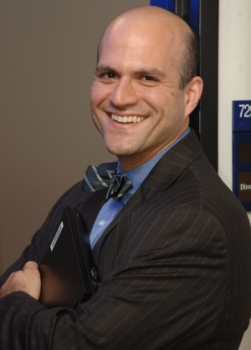 By Anthony Brino, Government Health IT
By Anthony Brino, Government Health IT
Achieving Farzad Mostashari’s vision for a U.S. healthcare system where “every encounter and every patient has access to all the world’s knowledge” will require a balancing of standards and innovation and a combination of IT and process change.
“We are so far from that today,” the national coordinator for health IT said speaking at last week’s HIMSS 2013 Government Health IT Conference. “Today, my last visit doesn’t contribute to my next visit in healthcare. Most discharge summaries don’t get to the primary care provider; most referral summaries don’t get back to the provider who ordered them.”
Offering a progress report on the Office of the National Coordinator’s interoperability standards development, Mostashari said what some meaningful use skeptics see as a foot-dragging – “why can’t it be like an ATM, where we stick our card into any ATM and we get our money out?” – is moreso an industry, guided by the federal government, working out regulatory and market-based solutions to complex, deep-seeded problems.
For example, the nationwide health information exchange: “People ask, ‘Where do I plug in,’” Mostashari said. “We don’t have that. There’s probably not going to be, and probably most Americans don’t want there to be, a single switch and a federal system that manages that.”
To Mostashari’s knowledge, no country with more than 10 million people could accomplish a central, government-run information exchange (Sweden is one). But the ONC’s goal remains the same, he said: “the information follows the patient wherever it needs to go.”
As the national coordinator, Mostashari sees his role as helping guide the industry to consensus. With health information exchange, the ONC decided not to establish an accreditation program, which the agency could have under the HITECH Act, as it’s done with EHR certification.
But much of the industry response to a request for information was: “Please don’t. There’s so much dynamism, there are so many models.”
Although, he said, “that doesn’t mean that we’re going to sit back entirely.” The ONC has developed voluntary guidelines for business and interoperability practices with a governance framework and through cooperative trust agreements.
And with HITECH funding for HIEs, Mostashari said the ONC is helping states realize their goals, rather than dictating certain models. Maryland, for instance, has created a statewide HIE, while Texas has been distributing funds to regional, often private HIEs.
HIE may be the more simple case of federal coordination, though, compared to guiding the industry to a consensus on EHR standards, such as for vocabularies and clinical summaries.
“Our approach is to rely on a competitive – we hope – marketplace.” Still, Mostashari said, even as we move in using the market “no less than Jonathan Bush” – the enigmatic, pro-market CEO of athenahealth – “said, ‘When the market fails, we need the government to step in.’”
As with ensuring that HIEs, whatever their local nuances, don’t incentivize the restriction of patient data sharing, Mostashari said, the goal with developing standards for interoperability has been to guide and reward collaboration.
For creating patient summaries, as ONC committees were sorting out two different existing standards, “there were 1,800 problems identified.”
Now, as a part of 2014 meaningful use certification, there is a single, consolidated clinical documentation standard. Likewise, the ONC has helped the industry settle on standards for vocabularies in diagnosis, medications and immunizations.
It hasn’t been easy; there were at times “religious wars,” Mostashari said. But there has been progress that should start showing itself in the clinical realm in the next decade – and the rules of the game are also changing with the advent of patient control of data.
“This is pretty radical; this is not something that easily fits into our model of business to business exchanges. This is the libertarian version of health information exchange. Give me my damn data, and I’ll share it with whoever I damn well please. It cuts through a lot of those policy challenges,” Mostashari said. “The Blue Button can offer exactly that promise. If we had tried to tightly regulate and control this, it may never have emerged.”
The Blue Button and similar patient-controlled health records are turning out to be a perhaps unexpected part of the ONC’s package of strategies to incentivize data sharing.
The goal, as Mostashari said, “is not just empower the players in the game, but change the rules of the game so that hoarding data is not profitable – so that collaborating on care is rewarded.”
